BMW’s original E21 3 Series was a big hit for BMW and spawned one of its all-time greatest model lines. Here’s what you need to know to secure a great example
Words: Andrew Everett Images: Paul Wager
It’s now the best part of five decades since the original E21 3 Series replaced the much loved 2002, itself one of the two ranges that saved BMW. The Neue Klasse (New Class) of 1962 had taken BMW in a whole new direction, directly towards the likes of Alfa Romeo; that is, moderately expensive, well-trimmed sporty saloons with high quality running gear and powerful engines. If those 1500 and 1600 saloons sold well, the smaller two door 1600 and 1600Ti cars based on a shorter wheelbase version of the same platform did even better, opening up the United States and Britain as big export markets.
The 1975 E21 3 Series was the next evolutionary step in BMW’s plan. Rivals Alfa Romeo and Lancia had both replaced their 1960s cars with bigger, heavier and more expensive models with much success, so BMW did the same. The result was a car that was slightly bigger than the 2002 and not quite as fast, but quieter, smoother-riding and more economical. It was also better-looking inside and out, trading the somewhat boat-like appearance of the 2002 for something far more modern with a vastly improved interior.
The monocoque bodyshell was all-new, as was the suspension. It followed the now-standard BMW format of McPherson struts up front and independent rear suspension with angled semi trailing arms. The 2002’s steering box was replaced with a rack and pinion set up: a first for BMW.
Under the bonnet, BMW reused the familiar M10 four-cylinder engine, now 13 years old and thoroughly revamped for the E21 3 Series with new combustion chamber and piston designs. The 90bhp 1573cc version powered the two-headlamp 316, while the 1990cc unit powered both the four-headlamp, 109bhp 320 and the 125bhp 320i, whose fuel-injection system ditched the 2002Tii’s Kugelfischer mechanical system for modern Bosch K Jetronic. Gearboxes were all Getrag 242 four-speed units save for an optional ZF three-speed automatic and a five-speed close ratio Getrag available on the 320 and 320i.
Early road tests generally agreed that the E21 3 Series was a worthwhile improvement over the 2002, although there were some caveats over the handling behaviour; in early 1976 the spring and damper rates were revised, after which the car drove more like a BMW than ever before. The 316 was very fussy and under-geared, while the 320i was very expensive at £4700, versus £3100 for a contemporary Ford Cortina 2000E.
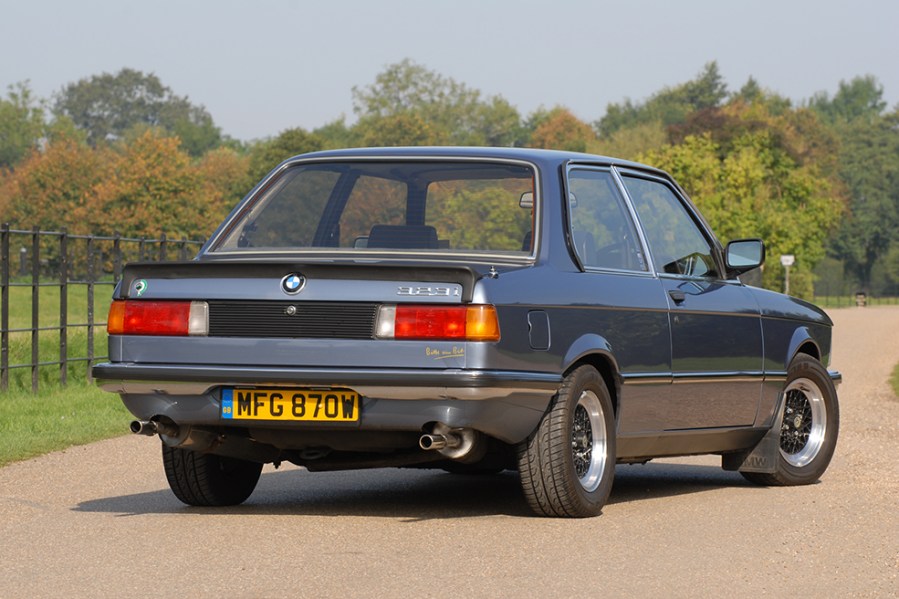
The mid-range 320 offered the best value at £4000: it was a brisk, nice driving and very nicely finished 2.0-litre two-door in the same pricing ballpark as an Alfa Romeo Alfetta or Lancia Beta that would prove far more long-lasting than its rivals. The E21 would be forever light on options though; electric windows and central locking never featured, and while a five-speed overdrive gearbox arrived late in the day. Sports suspension and a limited slip diff – as well as power steering later on – helped to improve the driving experience.
The first major change came in 1977 when the 2.0-litre M10 was replaced by the all-new six-cylinder M60 unit, also 1990cc but smoother, bigger, heavier and thirstier than the outgoing four-pot. Like the M10, the M60 (later renamed M20 for the 1982 E30 3 Series) was a canted-over, iron-block unit with an alloy crossflow head and a single overhead cam with inclined valves either side for the hemi chambers, but now a rubber belt replaced the cam chain. Fueling came courtesy of a Solex DVG four-barrel carb that was slightly too big for the application, doing no favours for fuel economy. It sounded good, however, and helped to lend the 320 a more cultured, long-legged feel along with the taller final drive and smooth 122bhp.
Star of the show was the 323i, which used a 2315cc Bosch K fuel-injected version of the new six-cylinder with 143bhp, along with uprated suspension, better-vented front disc brakes, and rear discs replacing drums. It even got Ford Capri-style twin exhausts for a more muscular appearance. Options included Bilstein sport suspension and a limited slip diff, which perhaps should have been standard – the basic 323i suffered from iffy traction in the wet and some scary handling traits. Power steering, Recaro seats, air conditioning and a steel sunroof were robbed from the options list to make the £6500 323i a £7200 car, but still £500 less than the recently launched (and four-cylinder powered) Porsche 924.
From here, changes were few and far between. The 1977 320’s electric fan was quickly replaced by the same viscous coupled fan as the 323i; rotary heater controls replaced the sliding levers in 1979, at which time there were changes to the trim. The 316 was given a boost in late 1980 when it was given the 318’s 1766cc engine with a new Pierburg carb and an optional five-speed gearbox, while the 320 and 323i began to be fitted with standard five-speed boxes for the 1981 model year. All models gained the 6-inch-wide steel wheels from the 320/323i as part of wider trim changes in late 1981.
By 1982, the all-new E30 3 Series was in the starting blocks and the E21 was gradually discontinued. But even after the E30’s March 1983 launch, the E21 316 stayed in limited production until September 1983, selling alongside the new E30 version but at a cheaper price. One other model of note is the cabriolet conversion made by Baur of Stuttgart from 1979; quite a few were made using whichever E21 was delivered but most seem to have been based the 320 model.

Bodywork
The E21 3 Series may well have been well finished, but the last one was built when Culture Club were still topping the charts. As a result, most are now long gone, with survivors either low-mileage minters, previously restored or in need of a lot of work. The E21 can rust with the best of them – problem areas include the sills, rear arches, front wings, front chassis legs, boot floor corners, the sunroof panel and jacking points, as well as the rear axle mounting points and the rear panel around the tail lights and boot seal.
Front strut towers rarely rot, but rear ones can and you do need to check the inner wings where the front panel joins. Also check where the B-pillar meets the rear wing, as stress cracks can appear here. New panels are just about available but are getting thin on the ground, with some sellers having interesting ideas on their value.
Overall, the E21 3 Series body is a typical monocoque shell; nowhere near as rot-prone as many other cars from the era and made of good steel that should be relatively simple to repair, but it’s only the 323is that are worth enough to warrant a strip-down and rebuild. Doors and boot lids don’t really rot but the clamshell bonnet certainly can; really good ones are rare, unless some enterprising soul begins importing panels from somewhere dry and hot.
Good chrome bumpers are now a highly prized commodity and most original cars will need a replacement section or two if you want a perfectly restored car. A front centre section alone will cost in excess of £300, and each bumper corner the same again. Yikes!
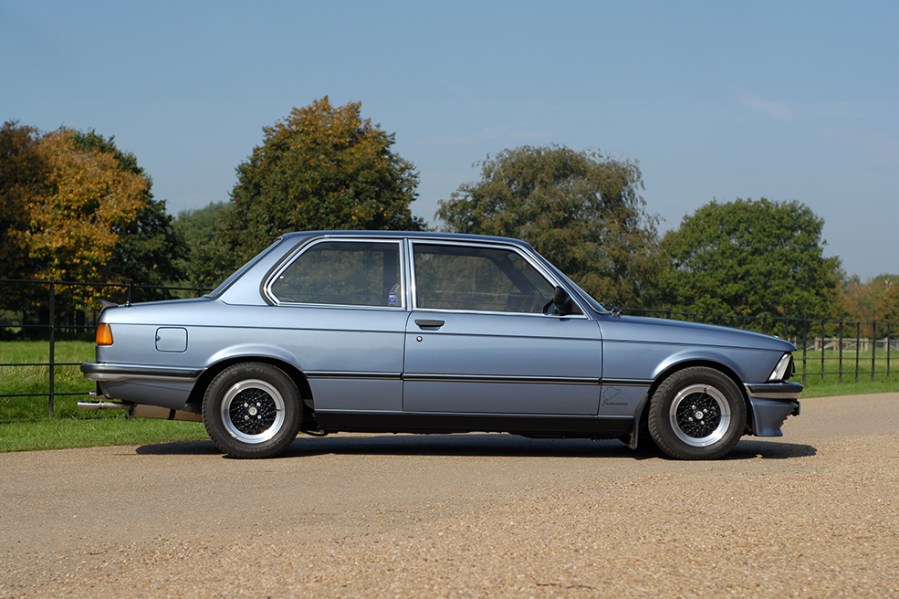
Engine and transmission
Starting with the M10, this is often regarded as bulletproof, but it’s not. Reliability was good when new and given regular oil and coolant changes the units would rock up 100,000 miles or more, but not many have been treated so well and with low gearing, the four-speed cars work pretty hard. The common issues are corroded alloy head coolant passages that eventually eat into the head gasket fire ring, along with valve guide wear that leads to a noisy top end and blue oil smoke on the overrun and of course the favourite – camshaft wear.
This is caused by a neglected oil spray bar. These need to be cleaned out by removing the oil supply banjo bolt, twisting the bar through 180 degrees and cleaning the holes out with a small drill. Enlarging the holes very slightly is a good idea as it reduces the chances of blockage. The banjo bolt can (and does) come loose too, but you should never add liquid thread-lock, as this will congeal inside and block the oil hole. Instead, BMW sell a new one for about £4, dry-thread-locked and with a very slightly different thread pitch so as to bite into the cylinder head more. Do this every time you adjust the tappets and the camshaft will live longer, sparing you an expensive and surprisingly difficult top end rebuild – getting the rocker shafts out can be a real mission.
Low oil pressure can indicate a generally tired engine, but can also mean the tiny O-ring on the steel pipe from the front oil gallery to the oil pump has gone – replacing that will require the removal of the sump and front timing cover. A generally thrashy rattle from the top front will most likely be a worn-out cam sprocket: very common on post-1980 1800cc engines with the Simplex timing chain. This is a simple and cheap fix, as a new sprocket and spring in the chain tensioner will sort it, although some need a bit of packing behind the spring to tension an older chain. These chains are very tough, however.
Most 316 and 320/4 carbs were fine, being basically older 2002-type Solexes; later Pierburgs from 1980 are best replaced with a Weber. Water pumps are reliable, as are the remote thermostats; a well maintained M10 is a very good engine, if very reliant on good maintenance.
The M60 unit in the 320/6 and 323i is equally good or bad. In the early days these were notorious for cracking cylinder heads, the crack occurring under the cam bearings and into the coolant passage below. This resulted in oil and water mixing, often misdiagnosed as a failed head gasket. These heads – the same on both units – have a casting number ending in ‘200’ and good ones are rare now. However, the later E30 320i M20 head will fit: the casting number ends in ‘731’. It has the same valves and chambers but bigger inlet ports – the E21 inlet manifold fits perfectly though, and a complete E30 head fits straight on with the E21 cam pulley. Be aware that the E28 BMW 525e also had a ‘200’ head, with only four of the bearing holes drilled.
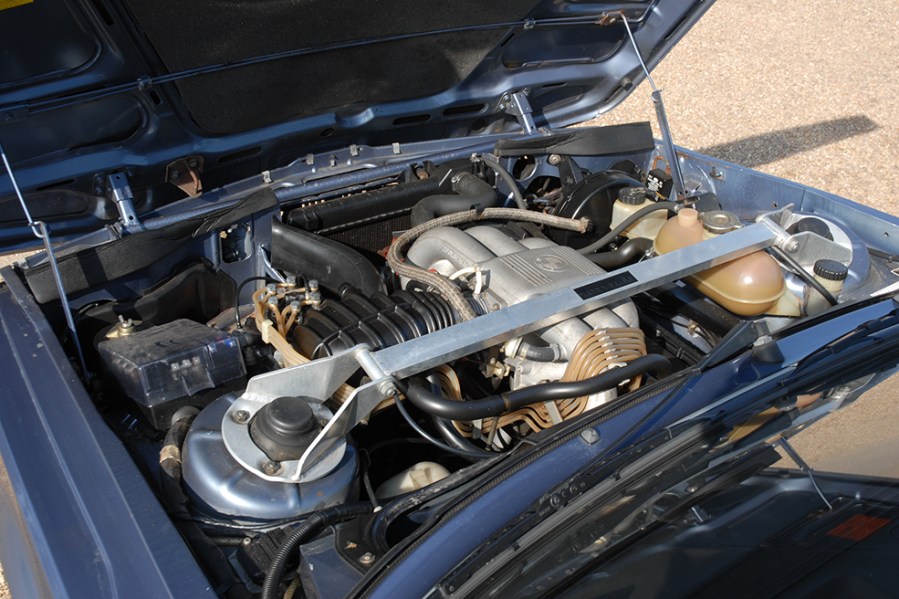
Engines built between 1977 and 1981 had square-tooth cambelts, although BMW supply both. The same camshaft wear caveats apply, although the spray bar banjos are built in and far better. The bottom end rarely gives trouble.
The 320 uses a Solex 4A1 DVG quad choke carburettor that is very unreliable in old age and often impossible to fix; it’s best to replace this with a 32/36 Weber. The 323i K Jetronic was also used on the original 320i and is good when it works, but parts supply is drying up. There also isn’t much knowledge around now on this system, and given that you can buy a good, complete post-1988 E30 325i engine with Motronic for around £700, it’s often worth just replacing the whole engine for this reliable 171bhp unit. The fuel pump sits next to the differential and the bird’s nest of steel pipes can rust; again, it’s often necessary to replace the whole lot.
The cooling system is simple but requires a good radiator and viscous fan coupling if it’s not to overheat. On the six-cylinder cars, it’s worth fitting a new water pump with every cambelt as they only cost £40 or so.
The E21 3 Series used a range of reliable manual gearboxes, both four and five-speed, and they are so tough it’s not worth going into much detail. Remember that if you need to replace one, the E21 has a speedo cable drive; later BMWs do not, so you need an E21 or E12 5-Series 518 or 520 ‘box. Gearboxes for four- and six-cylinder cars do not interchange.
An internally collapsing clutch hose is a common issue that leads to clutch failure – it will allow fluid through under pedal pressure but won’t allow it back fast enough, resulting in the release bearing overheating and seizing. A clutch is easy to replace and the parts are cheap enough, so be sure to replace the hose at the same time.
Propshaft Giubo front couplings and centre bearings will be at the age where they may need replacing, but it’s simple DIY job. The ZF three-speedo auto is a good, reliable unit and very rarely gives trouble; an occasional change of ATF Dexron II fluid keeps them good. Differentials almost never give trouble, although LSD-equipped units are very rare.
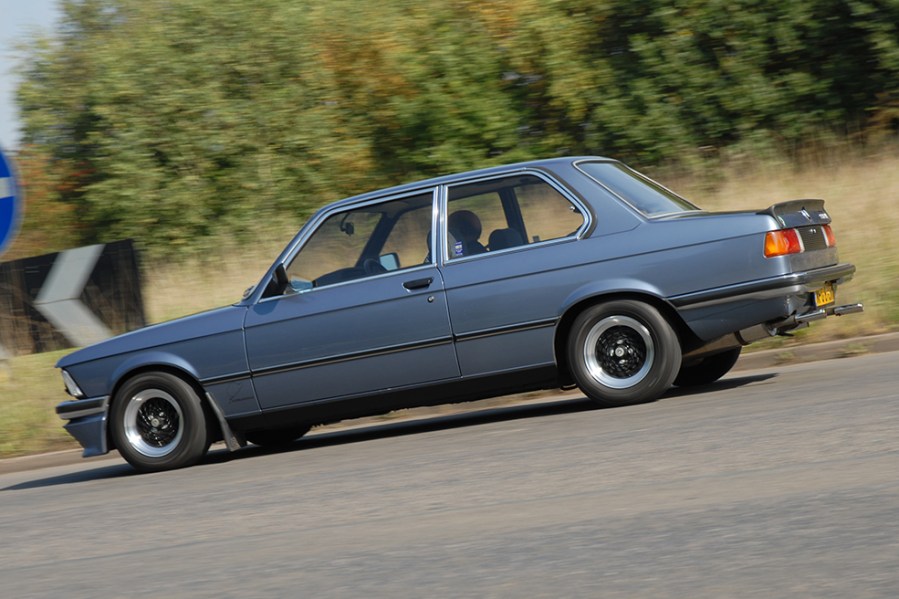
Suspension, steering and brakes
The E21 3 Series’ suspension holds no particular surprises and it’s the usual stuff – worn bushes, balljoints and dampers, none of which are very expensive or challenging to replace. The rear axle outer mounting beam bushes are bolt on, and while the front strut lower balljoints are too long to accept a regular balljoint splitter, a clout on the side of the strut with a steel hammer will release them.
The brakes are more trouble though. Early cars until August 1977 used twin remote servos and you won’t find any new ones when the seals go and brake fluid ends up in the air chamber. Some owners have replaced these with new Lockheed MGB units with new brake pipes having metric unions one end and imperial the other, but replacing it all with the later set-up of a single-servo with combined master cylinder is better.
Front brakes are twin piston calipers with drums on the sub-323i cars with manual adjusters that just love to seize solid. The steering rack rarely gives trouble, although good used PAS racks are now hard to find with many too worn to even rebuild. Elsewhere, E21 suspension was always set up to be soft, but Bilstein still do uprated dampers to cut the pitching and roll.
Interior, trim and electrics
The E21 3 Series has a simple wiring loom with decent connectors and very little to go wrong, certainly nothing that a bit of digging and a multimeter can’t sort out. Old Bosch components can last indefinitely, although the hazard warning switch is a weak point – these were known to short out and as they are available new, it’s worth replacing.
The interior trim is also simple and well-made, although the standard worn-out driver’s seat is a common problem. Correct cloth to repair one is now very difficult to find, especially for pre-1980 cars. Very often you will need to find a good passenger seat and use the covers from that.
Recaro seats were a fairly common option on the 323i, but they’re no harder to retrim than a standard seat to a good trimmer. Carpets are very tough, and because there were only manual locks and wind up windows, there is almost nothing else to go wrong.
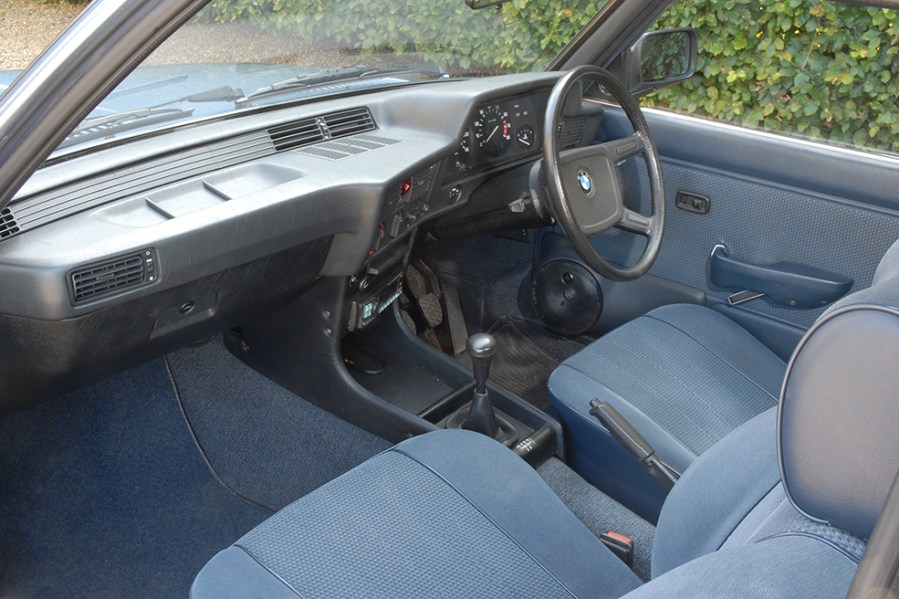
BMW 3 Series (E21): our verdict
While its the E30 and its 1990s successors that tend to get all the attention on the classic scene, the E21 3 Series remains a fantastic option for those looking for a poised sports saloon with plenty of DIY appeal. Parts are a little harder to come by but a good example will certainly be a reliable classic companion.
Early four cylinder 320/320i cars, never common when new, are extremely rare but not worth any more than a six-cylinder car. Prices for a good car start at around £5000, with many of the cheapest examples often found in European countries like Spain and Italy.
The 323i is a lot more money; again, the best are often found in Europe where there were more sold and are more proper unrestored gems – you’ll pay £20,000 or more for one of those. In the UK, a really good 323i manual will start at around the same price, or more for a car with a limited slip diff, Recaro seats and the sport gearbox.
Baur Cabriolet models are harder to value, but as with the 323i, they are certainly worth less than the hardtop saloons.
BMW 3 Series (E21) timeline
1975
E21 3 Series production begins in June with 1.6, 1.8 and 2.0-litre engine options
E21 first shown to the public at the Munich Olympic Stadium in July
Fuel-injected 320i introduced later this year
1976
Close-ratio five-speed gearbox option offered
1977
320 and 320i replaced by M20 six-cylinder with carburettor
Group 5 320 racer arrives as successor to the famous 3.0 CSL, nicknamed the Flying Brick, winning its first race at Zolder driven by Marc Surer
1978
Baur TopCabriolet production begins
First fuel-injected straight-six arrives badged 323i
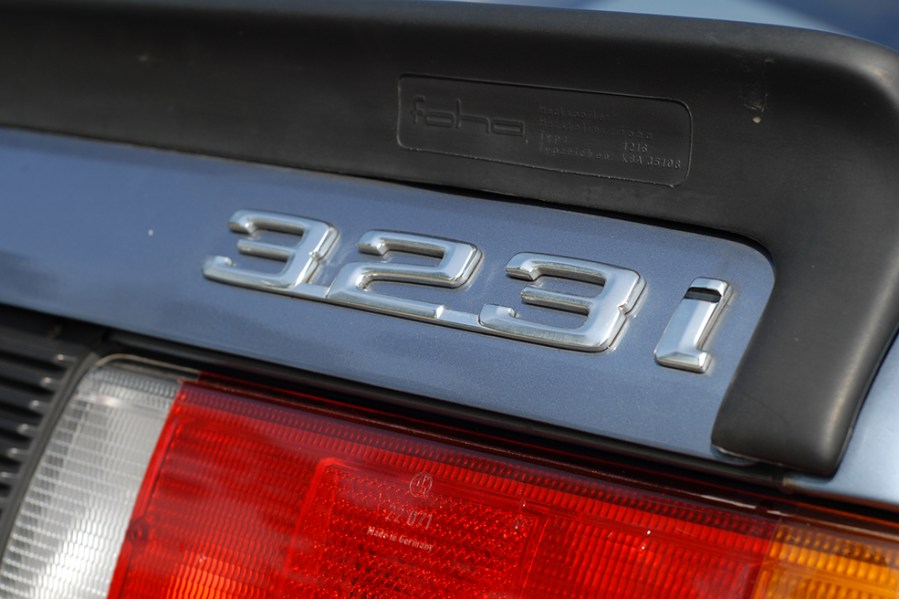
1981
Entry-level 315 introduced with detuned 1.6-litre engine in response to the Oil Crisis
Baur TopCabriolet production ends with 4,595 examples made
1982
E30 3 Series arrives as E21 replacement in November
1983
E21 3 Series production ends with 1,394,039 examples made

















